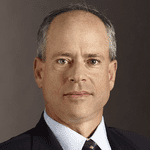
Mosaic Conversations: Clean Coalition Founder Craig Lewis on What it Will Take to Build a Clean, Local Energy System
Mosaic's Billy Parish talks with talk with Craig Lewis about the Clean Coalition and how we can accelerate the transition to a clean and local energy system.
This post is part of a series of conversations with leaders and innovators who are working to reinvent the global economy and energy system.
 Craig Lewis is the Founder and Executive Director of theClean Coalition, a nonprofit organization whose mission is to accelerate the transition to local energy systems through innovative policies and programs that deliver cost-effective renewable energy, strengthen local economies, foster environmental sustainability, and enhance energy security.
Craig Lewis is the Founder and Executive Director of theClean Coalition, a nonprofit organization whose mission is to accelerate the transition to local energy systems through innovative policies and programs that deliver cost-effective renewable energy, strengthen local economies, foster environmental sustainability, and enhance energy security.
Previously, Lewis served as VP of Government Relations at GreenVolts, a solar technology company, where he was the first person to successfully navigate a solar project through California’s Renewable Portfolio Standard (RPS) solicitation process. Lewis was also the energy policy lead on Steve Westly’s 2006 California gubernatorial campaign, and has over 20 years of experience in the renewables, wireless, semiconductor, and banking industries.
I recently had the chance to talk with Craig about the Clean Coalition and how we can accelerate the transition to a clean and local energy system.
You’ve dedicated your life to making clean local energy accessible. Could you tell us a little more about your work and what motivates you?
The most important motivation is that I have a 10-year-old son who is going to be inheriting what we leave to him. Practically speaking, I got into renewable energy after spending most of my career in the telecommunications industry. Like energy, telecom is a highly regulated industry dominated by powerful monopolies, and so it was in some ways a natural transition. When I was working on Steve Westly’s gubernatorial campaign, I ended up leading the energy policy team. We scoured the country for smart energy policies, looking for ways to motivate the deployment of clean energy at scale, and saw that it was clear what needed to happen. Clean Local Energy Accessible Now (CLEAN) Contracts, based on feed-in tariffs, are the best policy tool we have for deploying clean energy. That work, as well as my work in clean energy government relations, led me to my passion for accelerating the deployment of clean local energy.
Editor’s Note: For more on what CLEAN Contracts are and how they work, watch the video at the end of this post.
We’ve seen energy policy become increasingly politicized at the national level. Have you seen more bipartisan support at the state and local levels?
We’re seeing a growing interest in clean local energy in both blue and red states. On the local and state levels, smart politicians from both sides of the aside are recognizing the near-term benefits clean local energy brings to their constituencies – cost-effective energy, economic growth, a healthier environment, and greater energy security.
What have been some recent successes?
The Clean Coalition has had tremendous successes. Five regions have passed legislation reflective of the Clean Coalition’s standard for strong energy policy. In California, the major feed-in-tariff bill, SB32, is going through the final stretch of implementation. Just this year, California just passed SB 1332, a Clean Coalition-sponsored bill, which requires municipal utilities with more than 75k customers to launch CLEAN Programs by July 2013. We’re also seeing a growing movement towards clean local energy, as utilities across the country are increasing generation from distributed renewables through the adoption of CLEAN Programs.
What is the biggest hurdle our country must overcome to make clean local energy accessible?
Incentives provide the biggest hurdle. We have to create a different incentive structure that will get investor owned utilities (IOUs) on board with the transition to local energy systems. A key piece of this puzzle is ensuring smart investments are made into improving distribution grids, which will prepare the country for significant levels of local energy generation. Right now, utilities are incentivized to invest in the transmission grid but not in the distribution grid. For all transmission grid investments, utilities receive a return on equity of 15% annually for 50 years. This fiscal reward does not exist for distribution grid investments; therefore, utilities aren’t motivated to invest in the distribution grid. In fact, when it comes to the distribution grid, the developer always pays the costs of the upgrades and does not get reimbursed for these significant expenditures, greatly increasing the cost of local energy. We need to financially motivate IOUs to invest in local energy systems.
The bottom line is we know that the benefits of investing in clean, local energy are much greater than investing in the outdated model of centralized generation. There’s a greatUC Berkeley reportthat looked at the economic impacts of our statewide feed-in tariff. That study found that compared to a “business as usual” approach we’re essentially getting three times the economic impact by accelerating clean, local energy deployment. It makes economic sense to focus on local energy, but we need to align interests to make this happen.
Do you mind telling us where you invest your money?
I put my money where my mouth is. I am broadly diversified, but I have invested significantly in public companies in the solar industry and electric vehicle industry. Unfortunately, many of the companies have fared badly, and that’s why I’m excited about investing directly into solar projects with Mosaic.
